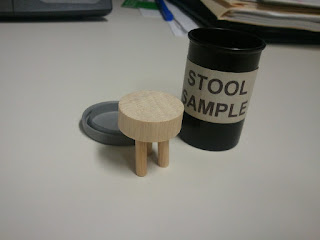Stool Culture, Here's What You Should Know
A stool culture is an examination of a stool sample to detect the type of bacteria that is causing disturbances in the digestive tract. This examination is done by storing a stool sample in a special place so that bacteria can grow and be seen through a microscope.
 |
| Stool Culture, Here's What You Should Know |
Stool culture is part of the stool examination. Stool culture begins with fecal sampling which can be done independently at home. Stool samples that have been taken need to be immediately taken to the laboratory for examination.
Purpose and Indications of Stool Culture
Stool culture aims to detect bacteria that cause disorders of the digestive tract, such as colitis, typhoid, or dysentery, so that the administration of antibiotics will be more appropriate.
Several types of bacteria that can be detected through stool culture are:
- Shigella
- Salmonella
- Yersinia
- Campylobacter
- E. coli
Generally, doctors will recommend stool cultures in patients who experience symptoms of digestive tract disorders, such as:
- Pain or cramps in the stomach
- Nausea and vomiting
- Prolonged diarrhea
- Bloody or slimy bowel movements
- High fever
- Loss of appetite
Stool Culture Warnings and Don'ts
There are no specific warnings or prohibitions for undergoing this examination. However, please note that stool samples should not be mixed with urine. Therefore, if the patient has to urinate, do so before collecting the stool sample.
Before Stool Culture
Before taking a stool sample, the patient will be given a container and a plastic bag to collect the stool. The doctor will explain how to collect and collect feces properly.
If the patient has difficulty defecating, the doctor will recommend drinking enough water, physical activity, and increasing consumption of high-fiber foods. Consumption of these foods can smooth the digestive tract.
Patients also need to tell the doctor if they are using antibiotics, laxatives, antacids, diarrhea medicines, and non-steroidal anti-inflammatory drugs (NSAIDs).
Stool Culture Procedure
The stool culture procedure begins with taking a stool or stool sample. Patients can take samples independently at home.
The following are several steps that patients can take in taking a stool sample:
- Wash hands before taking a stool sample.
- Urinate before defecating, so that the stool does not mix with urine.
- Place an empty plastic bag to collect the stool, so that the stool does not fall or splash in the toilet because it can become contaminated.
- Transfer the stool from the empty plastic to the container provided by the doctor using a special spoon.
- Fill the container a third with feces, then seal the container tightly.
- Make sure the stool doesn't mix with water, urine, and toilet paper.
- Place the container containing the stool sample in a small plastic bag and seal it tightly.
- Write the name, date of birth, and date of stool collection on the plastic bag and container, so that the stool is not mixed up.
- Wash hands with soap and running water until clean.
In infants or toddlers who wear diapers, fecal samples can be collected by inserting plastic over a clean diaper. The plastic must be placed right near the child's anus so that urine does not flow into the plastic stool.
The stool sample that has been taken will be immediately taken to the laboratory for examination. In the laboratory, the doctor will place the stool into a container that has been filled with special agar to encourage the growth of bacteria. The doctor will monitor the growth of bacteria in the stool through a microscope.
After Stool Culture
Generally, the results of a stool culture examination can be known 1–2 days after the stool sample is examined in the laboratory. The results of stool culture examination can be said to be abnormal if there is bacterial growth that should not be present in the digestive tract in the patient's stool sample.
According to the bacteria that appear on the results of the stool culture examination, the doctor will give antibiotics so that the gastrointestinal infection is resolved.
Stool Culture Complications or Side Effects
There are no complications or side effects arising from stool culture because the examination is safe and painless. It's just that, patients may feel embarrassed when giving a stool sample to a doctor or health worker in the laboratory.
Parents or caregivers who take stool samples of infants or children are at risk of contracting the infection that the patient has. However, the risk of transmission can be reduced by always washing your hands properly before and after taking a stool sample.
Related Searches:
- stool culture,
- stool culture test,
- cary-blair stool culture transport medium,
- what does a stool culture test for,
- cpt code for stool culture,
- stool culture cpt code,
- what does stool culture test for,
- yeast in stool culture,
- stool culture for c difficile,
- stool culture quest,

Post a Comment for "Stool Culture, Here's What You Should Know"